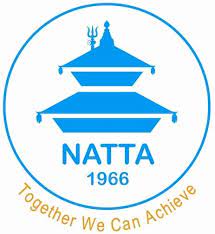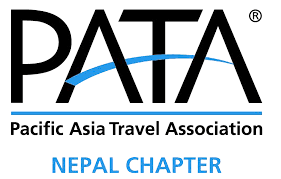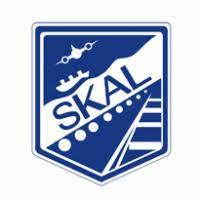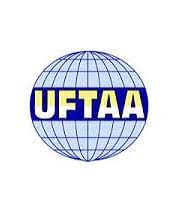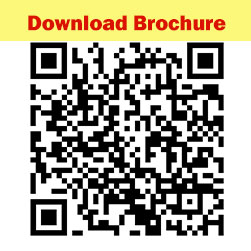FAQs
Frequently Asked Questions Section
Mountain Magic Treks to make your trips a great success with us, providing you with information on most asked question and queries, which helps you to plan and understand in advance before joining in our exotic Himalayan destination with enjoyable and exciting times and memories.
1. What is Trekking?
Trekking, the word at first comes for the long walking journey which is similar to hiking but includes more days of few days to a week or more form moderate-adventurous to challenging walks on trekking in the Himalayan countries involves much down and uphill climb with descending with few gradual walking paths.
2. How do I spend a day on daily trekking?
Trekking depends upon your chosen areas if it’s on mainstream trekking routes like Annapurna, Everest, and Langtang you will be spending overnight in the comfort nice and cozy lodge or guesthouse. A normal day on trek starts with tea and breakfast around 6: Am and then pack your bags for the day walks where larger bags are carried by our porters or pack animals (Yaks). While you carry your light day pack with necessary items for the day as the trek starts following lead Guide to a lunch stop for an hour or more and then walking to our designated overnight halt in lodge or camping. During the walk you will be walking on winding gradual trail with ups and downhill slopes past traditional and cultural local remote farm villages along with the views of snow-capped peaks, includes walking into a cool alpine forest covered with rhododendron, magnolia, hemlock, oaks, pines, and fir tree lines, walking for 5-6 hour as per day to day itinerary mentioned in your program.
3. How leads the trip and they are well trained and experienced?
No doubt about it, all our guides are export and professional in this line of job with more than decades of experience leading worldwide customers showing wonders of the Himalaya with full knowledge in flora-fauna, local culture and history with traditional life of the villagers including eco-tourism and responsible tourism caring, preserving and respecting local culture and saving the pristine environment from destruction. All our Guides and field staff well trained with the medical knowledge and can help you when an emergency situation arises with proper care and assurance and will treat you with medical know how. If it’s serious they are well equipped to call for helicopter services for emergency evacuation.
4. How is the meal in the Tea-House and lodge on trekking routes?
The meals that we serve on trekking routes, lodge or Tea-House will be hygienic as our cook and kitchen are well versed in hygiene and ecotourism in lodges we have cooked to supervise and to maintain the food quality as well. Food can vary depending upon the season and place according to its availability during the right season. Normally, the food menu has Nepali Dal Bhat (rice & lentil soup) with mild vegetable curry, fried rice, noodles, soups of great variation. In some places, Continental foods like Has Brown Potato, pieces of bread, Pan Cakes, Boiled Vegetables, Stew, Pizza, Cinnamon rolls, cakes, and pies, etc. But as you go higher the food menu is very limited due to the harsh cold climate and the altitude.
5. How is the standard of Tea-house on treks? Can I have my own single room?
There a few standards of Tea-House or lodge on the route of trekking so depending upon your choice and budget around Everest you can find the luxury of deluxe resorts and lodges in few areas, whereas on many places with overnights in a simple and basic standard lodge with views of mountains from your rooms. Most of the lodge with twin sharing rooms with separate common bath and restrooms with large and warm dining, few places where you can find rooms with attached toilet and bathrooms, higher due to harsh weather and terrain, much for the facilities are limited but serves you with the excellent food menu.
6. How are the arrangements for safe drinking water on trekking?
On every treks whether, on lodge or camping treks, we serve you with boiled and cooled drinking water which is safe, where purify tablets and process does not work 100% in Himalayan hard water, due to high mineral contains like manganese-bi-carbonate and iron. People can bottle water (but it is an expense and as well as not good for Eco-tourism wise as it creates rubbish with the plastic bottles).
7. How do I book a trip with your company?
At first spending, the advance trip payment to our company in our Bank account provided where you must file forms with the detail of your passport with expire dates, most important the trip of your choice and then sending a transfer minimum of 20% advance trip payment which is non-refundable to secure your booking well in advance. On receiving your details of following document like a passport with scanned or photocopy, along with booking forms, then we will send you a full confirmation letter with a deposit as well a receipt of advance trip payment.
You can contact us for direct transfer to deposit in our Bank account and as well with Credit Card payment, we do accept Visa/ Master Card or any other safe and widely used Credit Card with extra 04% surcharge as levy charge.
8. What type of physical fitness should one need to be?
All the type of travel around the world-wide one needs to be in normal physical shape with the sound medical background, as for trekking in the Himalaya which is within world highest mountainous region where one requires to be physically fit with sound health depending upon the trekking program chosen. We strongly recommend that you visit Medical doctor before you depart from home countries that you are fit for the trek chosen, where a doctor can provide you with some medical advice if required on the special medical and physical side.
9. Are your staff well-taken care with medical insurance?
Yes all our office staff and as well field staff, guide and porters are well insured before leaving for the trek with medical / health insurance equipped with warm clothing as per the region of trekking/climbing destinations. Our staff is well paid as per Nepal standard of living cost with extra company perks and bonus in making each trek a huge success.
10. What insurance do I need to obtain?
We strongly advise and suggest that all travelers booked with us to obtain Travel and medical insurance, which is a must and important in all our trekking destinations, as some treks lead to remote areas around Himalaya where medical facilities are less or do not exists.
All travelers should have adequate protection on tour and treks covering personal injury, death, medical expenses, and repatriation expenses by any means of transportation including Helicopter services or air ambulance in an emergency and immediate evacuation.
The insurance should also cover items or valuable if lost missing damaged or in theft situations.
11. What are the procedures in the case in an emergency?
Our Guide and field staff are well trained in Medical to know how, in such case with emergency situations, where client need to be evacuated from the areas of trekking our staff will contact the head office and soon and immediately we will send the helicopter for safe evacuation to reach nearest medical help and hospitals to save the clients for quick recovery from further illness.
12. Worried about AMS (Acute Mountain Sickness?
Areas of trekking from moderate-adventurous to challenging treks or climbs, our programs, and standard itineraries have enough acclimatization days at certain heights where rest and spare days are necessary on high altitude treks.
In certain high altitude treks and climb we do carry portable oxygen cylinders as well Gamma or pressure Bags to reduce the problem of AMS if arise, our staff is well trained for this type of situation where the victims will be carried or brought to lower elevation for safety precaution. Normally in high altitude, your doctor might have prescribed some medicine like Diamox or Actemodizile for high altitude start using one tab in the morning and one in nigh time before starting the trekking above 3,000 meters high keep using till return.
The best treatment for high altitude drinks plenty and pee a lot taking slow pace on uphill with plenty of short rest.
With AMS symptoms descend is the only remedy or evacuation in the severe case by any means of transport or by Helicopter.
13. What has safety measure and precaution taken from your side of the company?
First of all our guides are well prepared for the emergency situation and have gone through numerous medical and mountain rescue training each year.
We have set the itineraries days with much rest day for acclimatization at certain heights as safety measures and precaution, carrying portable oxygen bottles and Gamma or pressure bags when required by the victims or of AMS or other illness.
We have strong and good connections with private Helicopter companies for immediate emergency evacuation when needed.
On each trek, our guide will carry a comprehensive medical kit.
14. Do you have airport transfer facilities?
Yes, on all our trips when booked with us we provide transportation to and from the hotel-airport which is included in most of our trip cost.
15. Is there are Hot Shower and washing facilities on treks?
Depending upon the areas of trekking destination, like on normal mainstream trekking Everest- do have hot/ cold shower facilities in most of the lodge and hotels, some have hot water buckets for a bathe or for washing.
As the altitude gains such facilities are minimum of higher altitude areas, in camping sometimes we carry shower tents providing you with hot water buckets as well as washing water every morning before breakfast.
16. How much weight do we carry on the treks?
All our bigger bags with much weight will be carried by our porters and pack animals like Yaks and Mules, on domestic airlines 20 kg is the maximum weight that you can carry not counting your handbags.
While on trekking you will be carrying your personal belonging in your daypack which will be at list 5 to 10 kg maximum while other bigger bags carried by our porters.
Weight differs on the areas of trekking destination, on climbing you will be carrying much with climbing equipment and warmer high altitude gears as well.
Normally 20 o 30 kgs are enough on moderate and adventurous trekking programs which are the standard weight carried by a porter.
17. What is the best way to reach Nepal USA-UK- Australia and NZ?
Depending upon the season and connection of international airlines to and from Nepal to such countries in Nepal Saudi-Quarter-Gulf-Emirates-Etihad-Turkish airlines connects travelers to Nepal from Europe as well air India and other airlines like Jet Airlines also do connect with Nepal from India to other parts of the world with transit based in Indian cities of Mumbai-Calcutta and Delhi.
For Australia and New Zealand an easy connection with Thai-Dragon (Cathay Pacific Airline) Silk (Singapore Airline) connects flight to Kathmandu-Nepal via Hong Kong-Singapore and Bangkok while for west of the USA can use this route and for East of USA can travel through Europe to reach Kathmandu via respective airlines that connect with Nepal through certain transits points.
18. Do I need to be in Nepal a day earlier before the trip departure and book the air tickets well in advance?
It is best to reach Nepal much earlier at least 1-2 days before the trip departure if it is convenient for you as per you holiday limited time duration or a day before the trek departure, earlier arrival gives you time to blend with Nepalese environment and culture and to plan much batter with local shopping for the treks.
19. Can we recharge camera batteries on the treks?
Yes, it is available in most of the lodge where they have small Hydroelectricity power or by solar charging at extra cost, or one can carry a portable solar panel if you are trekking around remote areas of the Himalaya without such facilities.
20. Are the trekking gears available in Kathmandu for hire or to buy?
Yes, you can hire and buy all types of trekking equipment’s from down jackets to sleeping bags with other necessary gear needed on the treks.
If it’s too much to carry from home you can do your trekking shopping in Kathmandu or at Pokhara depending upon the areas of trekking.
21. Will my cell phone works on treks in Nepal?
Yes, it works depending upon areas of trekking, since last 2 decades, most of the villagers
And Guide does have cell-phones including STD/ISTD in some villages and towns Hotels and Lodges.
In some areas like deep valley and gorge area, the cell phone does not work well for some days, but normally on high and open areas it certainly works depending upon the local/international SIM used.
22. How much tipping should I keep in my budget?
Tipping is not compulsory but has become a tradition among Guides and trekking staff including porter started from early mountaineering expeditions which is still active to this day with tipping or gratitude to follow staff guides and porters in making the trip a great success with much enjoyable time.
Most of the abroad agents have mentioned the rate of tipping in their brochure and websites and it all depends upon a number of trekkers in the group and as well the duration of trekking.
Normally you can trip from the USD $ 50 to 100 in the kitty money with other members of the trek which is to be divided among trekking staff and porters by the head guide and group leaders.
If you have enjoyed more than enough with overwhelming time with your guides and porters you can hand more than the above-mentioned figure
23. Which Month to Trek and Travel in Nepal?
Once book with us we will certainly notify our clients the best season to trek in Nepal Himalaya, for this Short Annapurna Circuit Trekking, as this is an overland journey with adventurous treks.
In our entire trips, one will never be bored, as our trips are full of interesting and fascinating, enjoyable without a dull moment in our entire journey you will have time to observe village traditional life its rich culture as it was past many centuries.
The best time from March to June and October to early December months recommended except the wet months of July and August to Mid-September where the road can be broken with landslides.
From March to June and September to November are the best months to travel in most of Nepal Himalayas region. Please let us know your time of holiday and duration if it is in the Mit of winter like mid-December to mid-February a short mid hills trekking be done.
24. How and when can I book your trips?
Booking with Mountain Magic Treks can be done easily on selecting trip of your choice and interest, booking should be done a minimum of 4 weeks’ time before departing for treks as for private and individual groups with tailor-made programs can be done in short time of minimum of 2 weeks.
25. What time of the season is the best for the Himalayan holidays in Nepal?
Trekking and Hiking in Nepal Himalaya we organize in all season depending upon the types of adventure from soft-moderate to adventurous treks.
Nepal like other countries with 4 main seasons, Spring, Summer, includes monsoon (wet months) autumn or fall & winter.
For major treks best from March to June and September to November for moderate short treks all season except July to mid-September (wet monsoon months)
26. What to expect on trekking?
Nepal an amazing country capturing worlds Eight Highest Mountains Everest, Kanchenjunga, Lhotse, Makalu, Cho Oyo, Dhaulagiri, Manaslu, and Annapurna range where you will be rewarded with an outmost panorama of mountains on daily walks with stunning sunrise and sunsets views within scenic landscapes of green hills, valleys glacial rivers.
Walking into nice typical traditional villages lower areas dominated by Hindu religion people with Brahmins, Chettris, Dalits, and some mixed tribes of Newar, Magar, and Kirat people. Above 2000 meters of Tibetan Buddhism religion people Tamang, Sherpa, Gurung, Thakali, Manang, Mustang and Bhatia with age-old culture, a custom where you can visit its temples and monasteries of great interest.
27. How hard and tough is the trek?
Depending upon trekking destination where the Himalayas is full of ups and downs hill with few gradual sections on walks, longer treks involve high passes of above 4,000 to 5,000 meter with cold temperature minimum of -5 degree Celsius morning time and night time.
Duration and hours of walks can be from 6 to 8 hours on some days.
When you can walk at your own normal pace slow steady will be enjoyable with the surrounding fabulous views.
28. What will happens if one gets sick on treks?
In every trip, we always carry full stocked medical kits, where most visitors are aware of some medical problem in developing countries with hygiene and sanitation.
Our Guide and staff are well and fully trained with several medical course and First Aid if the serious problem arises our expert guides have the capacity to deal immediately and evacuate the sick victims to the nearest health post or hospitals.
On serious problem and accident with an emergency situation like AMS (Acute Mountain Sickness) where evacuation required, we will transport the victims on a helicopter to Kathmandu or to nearest towns and cities with good medical facilities.
29. How cold can get on trekking?
The Himalayan region also is known as the Third pole, depending upon the region of trekking normally days are warmer with sunshine in the high altitude, but in the cool shade, the temperature drops down mainly in the months. But April-May / June-September are much warm even above 2,500 meters the temperature drops up to below minimum minus-0 to -5 degree Celsius without wild chill factor, however mid-morning and afternoon are pleasant with some sunshine.
30. How long one must walk dally?
Depending on the trekking itinerary chosen with average hours of 4 to 5 hours normally but on longer adventure treks, can extend 7 to 8 hours especially on crossing high passes.
31. Is there any limit in ages on your treks?
No limit on age groups in most of our leisure and moderate where any people with sound physical/ medical health can join in our treks and tours.
But joining in longer adventure trekking maximum 65 years of age should book and one must be physically fit and in sound medical health.
We need medical reports from your doctors mentioning that one is fit for longer hard adventurous treks.
On treks from week to 10 days chill of minimum 4 to 5 years can join with the proper guidance of parents where extra porters/ staff will be needed to take care of the infants.
32. Is it safe from theft and robbery on treks?
Nepal, a country of warm hospitality where all worldwide travelers are welcome greeting with the warm cheerful smile. Most of your valuables and items are safe to carry, as Nepal has few theft and robbery cases within local towns and cities only, not a major crime like in other parts of the world. As the always where you travel, especially backpackers traveling alone without guides have encountered this situation rarely.
Using good companies with export and good guides where you will be always safe fro such situations, facing very minimum regarding this type of cases theft and robbery.
33. I am a vegetarian person is it alright?
There will be no problem, nowadays most of the clients from western countries are turning vegetarian. So on treks using Tea-House and lodge or camping where meat varieties are least available and as well due to hygiene quality.
We prefer and encourage serving vegetarian meals which safe and hygienic during the trips that we run.
34. Is there any medical facilities and hospital in trekking area?
On treks which involve walking in remote areas, where hospitals and medical care is very minimum, but some villages have a health post with simple and basic medical treatment
Towns and cities do have good medical facilities on a trek for severe and emergency situations our guide will contact the head office for immediate medical evacuation by other means of transport with helicopter services for the quick recovery.
For quick and immediate evacuation one should obtain the medical insurance policy to cover all medical, travel and Heli evacuation when required is such situations.
 Heritage Nepal - Tours and Treks
Heritage Nepal - Tours and Treks




